The Idiot (1868), by Fyodor Dostoyevsky, is a Russian classic. The protagonist, Prince Myshkin, is the Light Onto Dark of the story – the white knight and model by which everyone should follow. He is often regarded as “perfection” and “beautiful” because of his power to forgive and empathize with others. However, society at this time is not apt for this wellspring of hope and kindness. Because society is, for the most part, overwhelmingly greedy and egotistical. Many of the characters in this story are far too concerned with making money and lusting over woman.
The Light Onto Dark, that is the Prince, has been away from the motherland for four years, as he was being treated for a severe case of epilepsy in a Swiss sanitarium. I will be guiding you through the major locations in St. Petersburg that were depicted in The Idiot.
Our first stop is the St. Petersburg-Warsaw line: “A train of the Petersburg-Warsaw line was approaching Petersburg at full steam. It was so damp and foggy that dawn could barely break” (5).
It is on the train where we are first introduced to the Prince, as well as the other central character, Rogozhin, who just inherited a large sum of money. Rogozhin is obsessed with a woman named Nastasya Filippovna, and he plans to use the money to win her over.
Our next stop is St. Petersburg. In chapter one, part two, we become more familiarized with the Epanchin family and their wealthy estate. Accordingly, “General Epanchin lived in his own house off Liteinaya, towards the Cathedral of the Transfiguration” (15). It is here where the Prince meets the General and his wife, Elizaveta Prokofyevna, who is a distant relative of the Myshkin nobility. He also meets their three daughters – Alexandra, Adelaida, and Aglaya (the youngest and most beautiful).
 |
 |
The cathedral (left photo) was constructed between 1743 and 1754. After it was lost to a fire, the cathedral was rebuilt between 1825 and 1829 in the Empire style – an architectural design meant to idealize Napoleon’s leadership and the French state – that exists today.
The cathedral is located just off Liteyny Prospekt (right photo), near the Chernyshevskaya metro station. The avenue originated in 1738 when the forest was cleared to make a passageway from Nevsky Prospekt to a factory for casting metal at the banks of Neva River.
The Prince is advised to live with Ganya and his family. “General Epanchin owned another enormous house on Sadovaya Street” (15). In chapter eight, the Prince arrives at Ganya’s apartment: “not at all what the pocket of an official with a family, even on a salary of two thousand roubles, could afford” (89).
Sadovaya Street, constructed around 1710, is a major road in Saint Petersburg, passing through the historic city center. It runs from Nevsky Prospekt to Gorokhovaya Street. The street was filled with wealthy estates and with large gardens.
“In the 18th century, palaces and estates of the nobility had their front facades facing the river, and on the side facing the street gardens and orchards were arranged. This explains the street’s name Sadovaya (Garden).” – http://www.saint-petersburg.com/streets/sadovaya-street/
The Prince inquires into the Nastasya Filippovna’s address. According to General Ivolgin, the apartment is “far from here: by the Bolshoi Theater, Mrs. Mytovtsev’s house, almost there in the square, on the second floor” (126).
 |
 |
 |
Until 1886, the Bolshoi Kamenny Theatre was principal theatre for both the Imperial Ballet and the Imperial Russian Opera. The theater became the center of cultural life for the area. In the 1810s, the area became known as Teatralnaya Ploshchad, or Theatre Square.
“Due to the abundance of cabs at the Theater Square in winter you could see many outdoor pavilions with fires burning as cabbies waited for their riders”. – http://www.saint-petersburg.com/squares/theatre-square/
Our next stop is Pavlovsk, which is the youngest of the grand Imperial estates around St. Petersburg. In the early 19th century, Pavlovsk came to be what may be called a Russian Parnassus, a place where prominent writers and poets gathered.
In part two, chapter six of The Idiot, the Prince recovers from an epileptic fit at Lebedev’s dacha in Pavlovsk: “On the terrace, a rather spacious one, between the street entrance and the rooms inside, stood several bitter orange, lemon, and jasmine trees in big green wooden tubs, which amounted, by Lebedev’s reckoning, to a most enchanting look” (236).
 |
 |
In part three, chapter one, the Prince also spends time with the Epanchin’s at their summer dacha: “A luxurious place, in the style of a Swiss chalet, gracefully adorned on all sides with flowers and leaves. It was surrounded on all sides by a small but beautiful flower garden” (333).
 |
 |
 |
Our next important destination in The Idiot was the first Russian railway (constructed around 1836) that ran from Saint Petersburg to Pavlovsk Palace. In 1838, a music and entertainment pavilion was constructed at the railway station. This pavilion was called the Vokzal in homage to the Vauxhall Pleasure Gardens in London.
In part three, chapter two, the Prince joins Lizaveta Prokofyevna, her daughters and Yevgeny Pavlovich for a walk to the vauxhall (below) to hear the music.
 |
 |
 |
As he walked to the vauxhall, the Prince “seemed not at all aware that he was going there – he was in such a state. If he had been or could have been more attentive, he might have noticed a quarter of an hour ago that Aglaya, every so often and also as if uneasily, glanced furtively about, as though looking for something around her” (348).
While listening to the lively conversation in the park and gazing at Aglaya in awe, the Prince notices Rogozhin and Nastasya Filippovna in the crowd. Insulted by a demeaning remark made by an officer, Nastasya grabs a riding crop and whips him across the face with it. The good-natured Prince tries to step in to break off the fight, but is shoved aside.
In chapter seven, the Prince wanders through Pavlovsk park and finds the meeting place (a green bench) that was appointed to him by Aglaya: “Around him there was a beautiful, serene silence, with only the rustling of leaves, which seemed to make it still more silent and solitary” (424).
 |
 |
It is in the park where the Prince and Aglaya share their feelings for one another. Aglaya has been influenced by the Light Onto Dark, the symbol of Prince Myshkin’s beauty and honest nature. She would rather run away and learn about the world with him than be bottled up in a marriage that is arranged by her family.
However, in part four, chapter ten, the Prince decides to marry Nastasya Filippovna with the intent of saving her from all the suffering that Rogozhin has caused her.
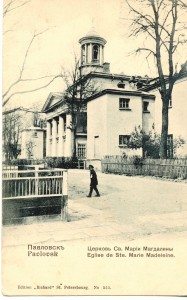 |
 |
 |
Although it is not referred to as the Church of Saint Maria Magdalena in Pavlovsk, it is the church that best fits the place described in part four, chapter ten of the novel. This is the church where the Prince plans on marrying Nastasya. It was “pointed out to the prince that if the wedding was already decided on, why have it in Pavlovsk of all places … Would it not be better in Petersburg and even at home? It was only too clear to the prince what all these fears were driving at; but he replied briefly and simply that such was the absolute wish of Nastasya Filippovna” (585).
This plan backfires when Nastasya leaves with Rogozhin instead. Nastasya believes that if the Prince stays with her long enough, he would be ruined by her dishonorable nature. In many ways, the Light Onto Dark is too insufferable for her.
In the search for Nastasya, the Prince is confronted by Rogozhin on Gorokhovaya Street (below), which is one of central Saint Petersburg’s major roads. The street crosses the Moyka River and Sadovaya Street.
 |
 |
 |
In part four, chapter eleven: “When they finally turned from two different sidewalks onto Gorokhovaya and approached Rogozhin’s house, the prince’s legs again began to give way under him, so that he had difficulty walking” (604). In the back of his mind, the Prince always knew what would happen to her, and he always knew that Rogozhin would be responsible.
For more information on Vitaly Sumin, the director of Dostoyevsky – Los Angeles Project be sure to visit us at home and sign up for our free newsletter at Dostoyevsky Reimagined: The Making of Notes from the New World. You’ll gain exclusive access to our members-only content and the incentives.
*****
VM Productions is happy to announce that the pre-production of our feature length project Crime & Punishment, LA – following by the shoot of the movie – is scheduled to begin on Tuesday, January 7th 2020 in Los Angeles! http://www.vmpfilms.com/#August_
Crime and Punishment, LA, represents the third chapter of VM Productions ambitious Dostoyevsky-LA Project (following the completed movies Shades of Day & Notes From the New World) – a re-envisioning of Dostoyevsky’s classic novel transported to LA during the riots of 1992. C&P, LA -currently in the active development- was selected, as the winner, for the European Co-Production Matchmaking Program at SXSW –https://bit.ly/324e5kD
*****
Want to know about VM Productions‘ Dostoyevsky-Los Angeles Project and about the films we make? Want to participate in our projects? Sign up to get tickets to the premiere of our movie (currently in post production), Dostoyevsky Reimagined-BTS and grab our FREE e-books !
 |
 |
 Follow us through our social media on
Follow us through our social media on
Twitter, Facebook, Pinterest, Tumblr, Instagram, Goodreads.
We hope to see you back here soon!

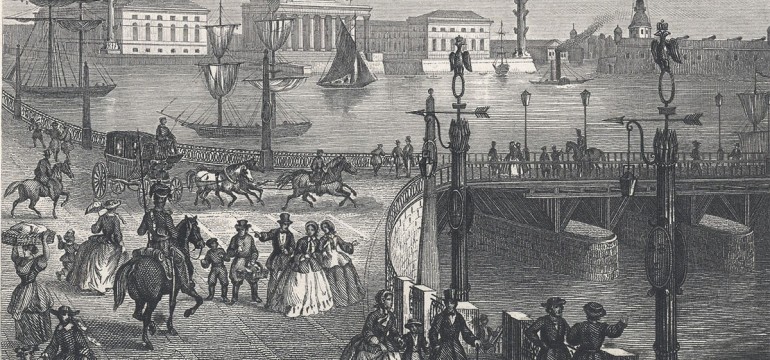

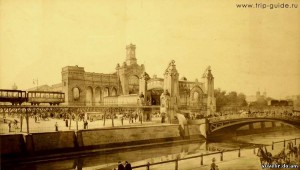





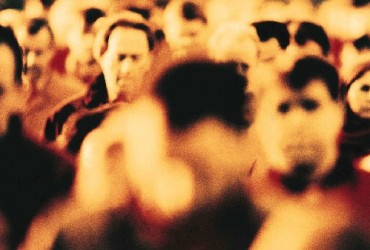


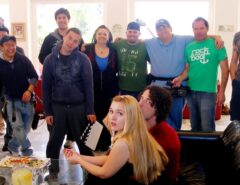
Leave a Reply